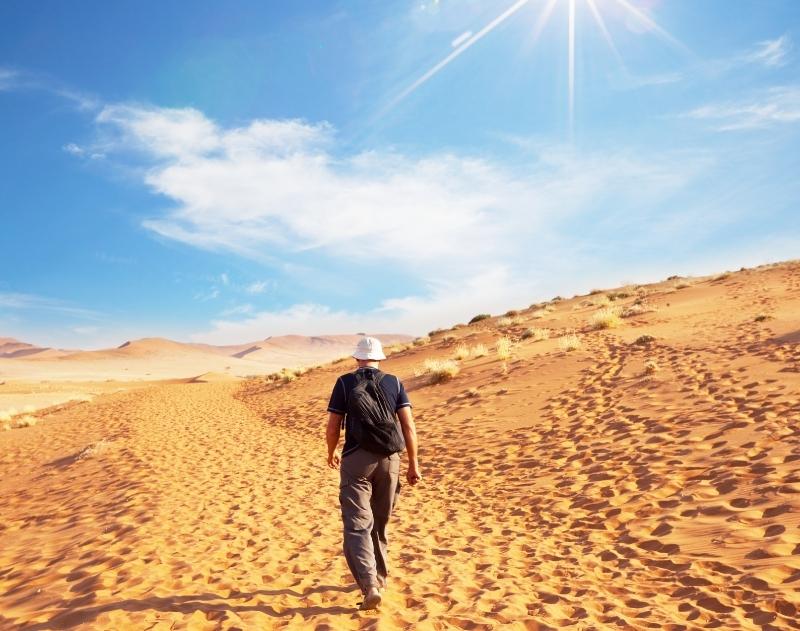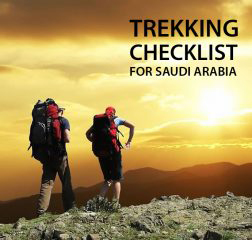Saudi Arabian Travel Terminologies
Below are some of the commonly used words that a traveler or a tourist come across in Saudi Arabia. These could be of place names, historic references, food, clothing…etc. These terminologies will be useful for a better understanding of the situation.
In addition to it, historical, geographical, anthropological and geological terms that appeared in this site have also been added to help those who are new to the subject.
-
A
-
B
- C
- D
- E
- F
- G
- H
- I
- J
- k
- L
- M
- N
- O
- P
- Q
- R
- S
- T
- U
- V
- W
- X
- Y
- Z
Abaya
It is a large, mostly black cloak, worn by women
Adummatu
Ancient name of Dumat Al-Jandal that was known through Assyrians
Agal
It is a thick, doubled, black cord which is worn on top of the ghutra to hold it in place
Al Hasa (Hassa or Al Ahsa)
Usually referred as “the great oasis of Al Hasa” is located in the desert in Eastern Province of Saudi Arabia. The Eastern Province had been known as Al Hasa under Ottoman rule. The name Hasa is also given to the biggest city in the Al Hasa oasis, known also as Hofuf
Al-Hijr
Old name for Mada’in Salih
Assyrian
A member of an ancient Semitic kingdom and people of Mesopotamia
Aldha
It is the most famous popular folk art in the Northern Borders province of Saudi Arabia
BC
Abbreviation for “Before Christ”
BCE
Abbreviation for either “Before Common Era” or “Before Current Era” or “Before Christian Era”
Bedouin
A nomadic Arab of the desert regions of Arabia
Boshiya
A black veil, light in weight, worn across the lower part of the face
CE
Abbreviation for “Christian Era” or “Common Era” or “Current Era” (alternatively used as AD)
Dadan or Dedan
Old name for Al-Ula
Darb
Route or Way
Dhab
Arabic:’ضب’ is the Egyptian Mastigure which is a species of lizard that was very common in the gravel plains and rocky areas of Saudi Arabia though the numbers are reducing due to excessive hunting. Their meat is said to have good source of protein and the skin make good leather.
Escarpment
A steep slope or cliff that mark the boundary of a flat or gently slopping upland area such as a plateau
Fertile Crescent
An area of fertile land in the Middle East reaching from Israel to the Persian Gulf and incorporating the Tigris and Euphrates rivers in modern Iraq. The ancient Babylonian, Sumerian, Assyrian, Phoenician, and Hebrew civilizations started here.
Ghutra
A square scarf, made of cotton or any other cloth, worn by men by folded across the head over the Taqiyah. The end of the scarf can be draped across the face to protect from sandstorms
Graffiti
Graffiti, by word, means drawing or writing painted on a wall. You may find this word interchangeably used to mean petroglyphs. Petroglyphs are ancient or prehistoric carving, painting, or inscription on a rock
Hajj
Annual pilgrimage to Makkah. Hajj is performed in the twelfth month of the Islamic Calendar and is an obligation once in a lifetime for those who are physically and financially able to perform it.
Hayy
Quarter, District
Hijaz (Hejaz)
Northwestern Saudi Arabia, on the Gulf of Aqaba and Red Sea. Makkah and Madinah lies in this region. In 1916, Hijaz was proclaimed independent by Husayn ibn Ali, the sherif of Makkah, who with the aid of T. E. Lawrence destroyed Turkish authority.
Hijrah
Emigration of the Prophet Mohammad (PBUH) from Makkah to Madinah. Islamic Calendar (or Hijri Calendar) begins from this date.
Ibn or Bin
Son of
Jebal (pl Jibal)
Mountain
Ka’bah
Ka’bah is the Sacred House. The first house built on earth to worship Allah (the God Almighty) by the Prophet Ibrahim (Abraham) and his son Ismail (Ishmael) by the command of God. It is a black square building (14 meter in height) in the central courtyard of Masjid Al Haram. Muslims all over the world turn towards Ka’bah during Prayer.
Kabsa
It is a rice dish made of long-grain Basmati with a mixture of spices, vegetables and meat. It is considered as a national dish of Saudi Arabia.
Levant
former name for the region in the eastern Mediterranean comprising modern-day Lebanon, Israel, and parts of Syria and Turkey.
Mandi
A long-grain Basmati rice dish made of meat (especially lamb or chicken) with a mixture of spices. Though a traditional Yemeni dish, it is widely consumed in Saudi Arabia.
Masjid
Mosque
Mesopotamia
ancient region located between the Tigris and Euphrates rivers in modern Iraq and Syria.
Murra tribes
The most primitive of all the tribes of Arabia. They are long-haired lean men with wild eyes and crafty faces and were pure Bedouins.
Najd (Nejd)
Central Saudi Arabia. A vast plateau. Najd means highland or plateau. Riyadh, the capital city, lies in the region of Najd. Najdis are those who live in Najd.
nomad (nomadic, adj)
Literally means wanderer.
Somebody who belongs to a group of people who move from place to place seasonally in search of pasture for their herds or food and water. A gypsy.
No terms available under the letter.
No terms available under the letter.
Qasr
Palace
Qiblah
Place Muslims turn towards when they pray. Qiblah of the Muslims is Ka’bah in Makkah
Ramadan
The ninth month of Islamic Calendar which is lunar, not solar, in which all Muslims fast from dawn until sunset, abstaining from food, drink, and sexual relations.
Rowdah (pl Riyadh)
Garden
Rababah
A stringed instrument played with a bow.
The Sabaeans or Sabeans
They were an ancient people speaking an Old South Arabian language who lived in the south west of the Arabian Peninsula which is today’s Yemen. Ancient Yemenis.
Sha’ib
Wide Valley
Steppe
An extensive semiarid grassy plain usually without trees
Surwal
These are cotton or silk trousers worn by women under the thobe
Tabah
Another name for Al-Madinah
Tabi’oon (التابعون)
It means “Followers”. They are the generation of Muslims who were born after the death of the Prophet Muhammad (PBUH) but who were contemporaries of the Sahaba, “The Companions” of the Prophet (PBUH). They met and learned from “the companions”
Tabi’i Tabi’een (تابع التابعين)
It is the generation after the Tabi’oon in Islam. They are the second generation after the generation of Prophet Muhammad (PBUH) who said, “The best people are those living in my generation, then those coming after them (Tabi‘in), and then those coming after the second generation”
Taibah
Another name for Al-Madinah
Taqiyah or Tagiyah
It is a white knitted skull cap worn by men
Thobe
The traditional clothing for men. It is a loose, long-sleeved, ankle length garment. Thobes worn in summer are generally white and made of cotton while thobes worn in winter are generally darker in color and made of wool.
Women too wear a thobe but with embroidered and decorated neck and front.
Tihamah
Refers to the coastal plains along the Red Sea, which extend from Yanbu in the north to Najran in the south. It is so called because of its severe heat and lack of wind, from the word At-Taham which refers to extreme heat and lack of wind
No terms available under the letter.
No terms available under the letter.
Wadi
In English speaking world, wadi is known by different terms like, valleys, gorges, ravines and Gullies
Wahhabism
A term used widely in the literature of Western scholarship to refer to Sheikh Muhammad bin Abdul Wahhab’s religious reform movement that was supported by the Al Saud family.
Wahhabiyya
The name given by the opponents to the movement of Sheikh Muhammad bin Abdul Wahhab
No terms available under the letter.
Yathrib
Name of the city of Madinah in pre-Islamic times
No terms available under the letter.




